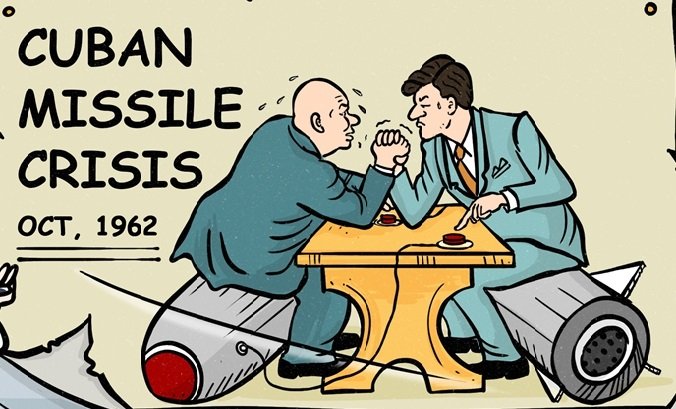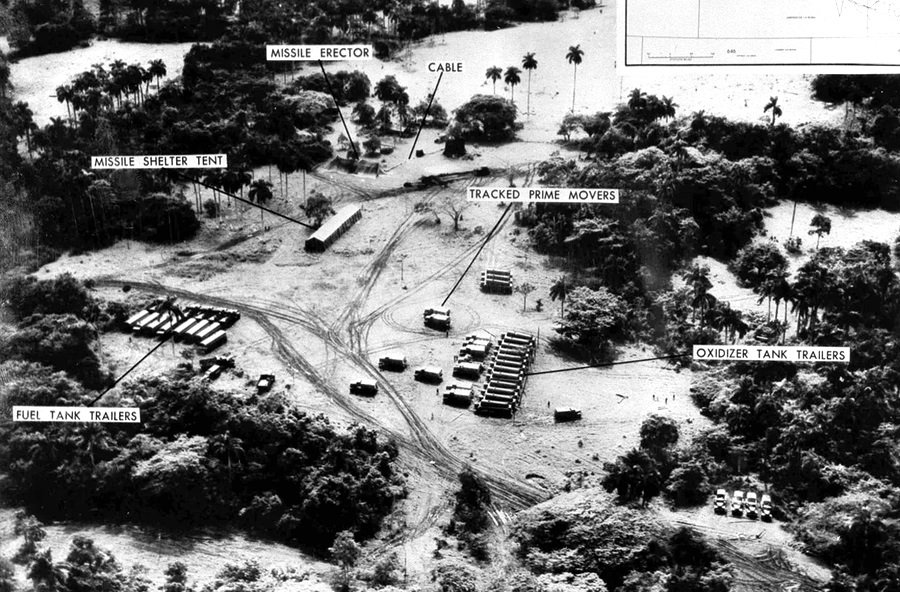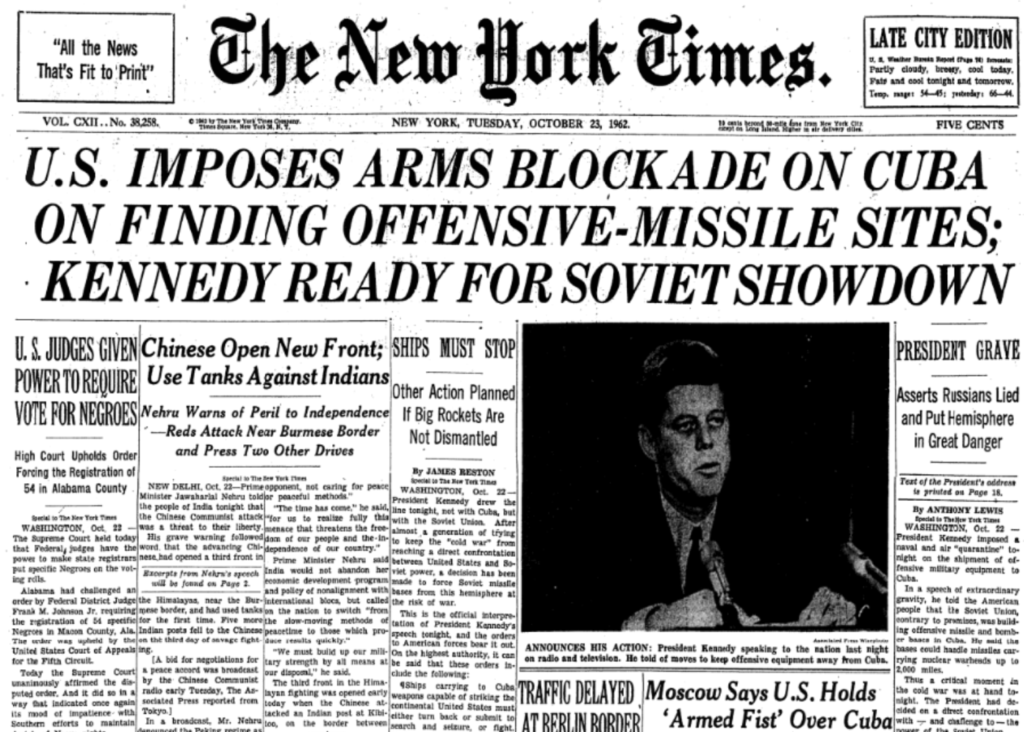In the annals of history, few events stand out as starkly as the Cuban Missile Crisis of October 1962. Tensions between the United States and the Soviet Union reached a boiling point, bringing the world to the brink of nuclear war.
This 13-day standoff had far-reaching implications, altering the course of the Cold War and reshaping global politics. In this blog, we will delve into the events leading up to the crisis, the unfolding of the confrontation, and its lasting impact on international relations

BACKGROUND: CUBAN MISSILE CRISIS
To understand the Cuban Missile Crisis, one must first examine the context of the Cold War. The ideological rivalry between the United States and the Soviet Union had intensified over the years, with each superpower vying for global dominance. Cuba, led by Fidel Castro, emerged as a focal point in this geopolitical struggle. The Cuban Revolution of 1959 saw the rise of a communist government aligned with the Soviet Union, right at the doorstep of the United States.
In response to Cuba’s alignment with the Soviet Union, the U.S. implemented economic sanctions and attempted to isolate the island nation. This strained relationship set the stage for the dramatic events that unfolded in October 1962.
UNFOLDING OF CRISIS
The crisis began when U.S. reconnaissance flights revealed the construction of Soviet missile sites in Cuba. These sites housed nuclear-armed missiles capable of reaching major U.S. cities. The revelation sent shockwaves through the Kennedy administration, sparking a series of high-stakes deliberations.
President John F. Kennedy, faced with the imminent threat of nuclear war, assembled a group of advisors known as the ExComm (Executive Committee of the National Security Council). The ExComm grappled with the gravity of the situation, weighing various options for response. The choices ranged from a diplomatic approach to a full-scale military invasion of Cuba.

KENNEDY'S DILEMMA
As the crisis unfolded, Kennedy faced a formidable dilemma. On one hand, he had to address the immediate threat to U.S. security posed by the Soviet missiles in Cuba. On the other hand, he had to navigate the delicate balance of not escalating the situation to a point where it spiraled into a nuclear conflict.
Kennedy’s decision-making process during the crisis remains a subject of historical analysis and debate. His measured and cautious approach ultimately prevailed, avoiding a direct confrontation with the Soviet Union and opting for a diplomatic solution.
THE QUARANTINE
On October 22, 1962, President Kennedy addressed the nation, revealing the presence of Soviet missiles in Cuba and announcing a naval quarantine to prevent further shipments of military supplies to the island. The term “quarantine” was chosen carefully to avoid the more provocative term “blockade,” as the latter could be considered an act of war.
Kennedy’s speech was a pivotal moment in the crisis, as it signaled the United States’ resolve to confront the Soviet Union over the presence of nuclear weapons in Cuba. The quarantine was a bold move, and tensions escalated as both superpowers flexed their military muscles

BACKCHANNEL DIPLOMACY
While the world watched anxiously, behind-the-scenes negotiations were taking place. A series of letters between Kennedy and Soviet Premier Nikita Khrushchev paved the way for a peaceful resolution. Khrushchev proposed removing the missiles in exchange for a public assurance from the U.S. that it would not invade Cuba. Kennedy, recognizing the opportunity to avoid a nuclear catastrophe, accepted the offer.
THE RESOLUTION
On October 28, 1962, Khrushchev announced the removal of Soviet missiles from Cuba, and the crisis came to an end. In return, the U.S. pledged not to invade Cuba and secretly agreed to remove its missiles from Turkey. The resolution marked a crucial moment in Cold War history, as the two superpowers stepped back from the brink of nuclear war.
LEGACY AND IMPACT
The Cuban Missile Crisis had a profound and lasting impact on international relations. It served as a wake-up call for both the United States and the Soviet Union, highlighting the dangers of nuclear brinkmanship. The crisis led to the establishment of the “hotline” between Washington and Moscow, a direct communication link intended to prevent misunderstandings that could lead to nuclear war.
Additionally, the Cuban Missile Crisis had a significant impact on arms control efforts. The Limited Test Ban Treaty of 1963, which prohibited nuclear weapons testing in the atmosphere, space, and underwater, was a direct outcome of the crisis. The fear and realization of the destructive power of nuclear weapons spurred efforts to prevent their proliferation and use.
The crisis also contributed to a thaw in U.S.-Soviet relations. While the ideological differences persisted, both superpowers recognized the need for diplomatic channels to manage conflicts and prevent the escalation of hostilities.
CONCLUSION
The Cuban Missile Crisis remains a pivotal moment in world history, a 13-day period when the world held its breath, teetering on the edge of nuclear annihilation. The crisis demonstrated the importance of diplomacy, strategic thinking, and the perilous nature of nuclear weapons.
As we reflect on this chapter of the Cold War, it serves as a stark reminder of the responsibilities and consequences that come with wielding the power of mass destruction. The Cuban Missile Crisis, with its tense negotiations and the specter of mutual destruction, ultimately shaped a more cautious and measured approach to international relations in the post-Cold War era.
